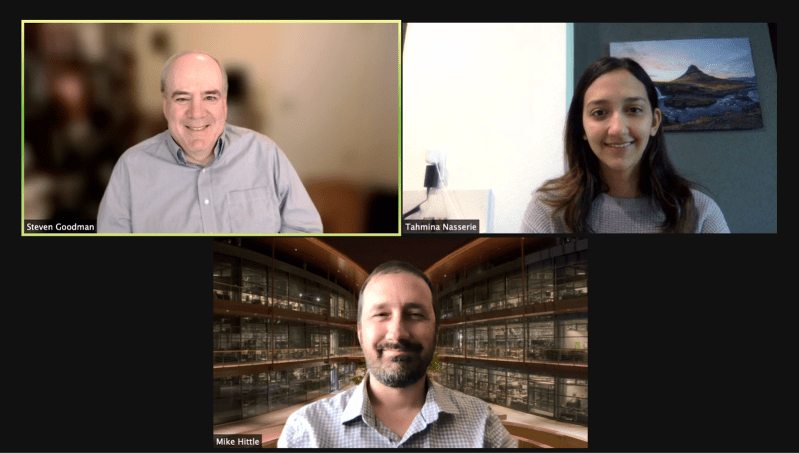More than 70% of hospitalized COVID-19 patients experience persistent symptoms months after initial recovery, according to a new Stanford School of Medicine study published in the JAMA Network Open Medical Journal on Wednesday. Alongside their findings, the lead authors designed a set of recommendations to help future research standards and guidelines produce consistent results on the long-term COVID-19 recovery.
In one of the largest systematic scientific reviews on the post-COVID-19 phase to date, authors compiled results from 45 studies conducted from January 2020 to March 2021 and found a vast array of symptoms associated with what medical experts coin “long-haul COVID.” The news of lingering side-effects linked to COVID-19 has been raised as early as mid-2020.
According to the study’s senior author Steven Goodman, professor of epidemiology and population health and of medicine, one of the central motivations for the study was that within scientific debate around COVID lockdown rules, experts usually focused on mortality rates and ignored statistics dealing with long-term issues people face after returning home from the hospital. The team’s “surprisingly high” numbers show that there is a sizable group of individuals who suffer even after initial recovery from the disease.
According to lead author Tahmina Nasserie, a fourth-year epidemiology and population health Ph.D. student, the study observed a total of 84 different symptoms and clinical signs, ranging from shortness of breath to fatigue to loss of taste and smell. Around 40% of patients experienced lasting fatigue/exhaustion in 25 studies, 36% experienced shortness of breath in 26 studies, 29.4% experienced insomnia in eight studies and 25% experienced “brain fog” in five studies.
The team did not have a COVID-19 negative cohort with which to compare their results, so it is unknown exactly how many people may have had these symptoms before taking part in the studies due to the effects of lockdown or unrelated poor health. However, “brain fog,” shortness of breath and loss of taste or smell are less likely to have been present prior to the research, according to Goodman.
The research team found that 16 out of the 45 studies explicitly reported a median value of 72.5% of people experiencing at least one such symptom. Researchers labeled persistent symptoms as those lasting for 60 days or more after diagnosis, symptom onset or hospital admission, or at least 30 days after recovery from acute illness or hospital discharge.
The team looked at 9,751 patients who had been diagnosed with COVID-19, 83% of whom had been hospitalized with moderate to severe cases, Nasserie said. Her team investigated studies published in English around the world, a majority of which tracked their patients for three months and a few that had six-month timeframes.
Goodman noted how important these findings are for public awareness and future research commitments on this issue.
“Even though hospitalized patients are a minority of the total number of people who have COVID, it is still, in aggregate, a very, very large number,” Goodman said. “It is also clear that it is a multi-system disease.”
Additionally, the serious symptoms recorded can negatively impact one’s quality of life as some affected individuals cannot get out of bed, brush their teeth or climb a flight of stairs, according to Goodman. He added that acute COVID patients will need continued care on an outpatient basis, placing an incredible burden both on the patients and on the healthcare system. Thus, COVID may be a potentially long-term illness that lasts for three months, six months, a year or even longer for some people.
However, due to the nature of the studies analyzed, the authors could not provide conclusive answers that address exactly when symptoms resolve.
“We do not really have a good handle on how long these symptoms actually lasted, because they were not followed until they resolved,” Goodman said. “The studies with a length of six months do suggest that a lot of hospitalized patients have symptoms that last quite a long time.”
In response, Goodman, Nasserie and co-author Michael Hittle ’20, a first-year epidemiology and clinical research Ph.D. student, composed a list of 20 recommendations spanning seven different categories of study design elements. Certain specific instructions include maintaining a non-COVID cohort for comparison, a standard measurement for the “time zero” of infection, fixed intervals for check-in examinations and a universal definition of the various symptoms encountered.
Another variable the group found was the number of “drop-outs” occurring in COVID-19 studies. Among the studies that reported a retention rate, the median value was 74%, meaning that almost a quarter of initial patients did not fully participate. According to Goodman, a recommendation here is for future researchers to consistently stay in contact with all patients or account for the date on and reason for which they “dropped out.”
The Stanford researchers have hope that their suggestions will take shape in upcoming studies. To support long-haul COVID-related exploration, the National Institutes of Health (NIH) launched a $1.15 billion initiative to which Goodman, Nasserie and Hittle have applied for funding.
“We hope that some of the recommendations we outline in the study will be of use for these future studies that are going to be conducted,” Nasserie said.
With NIH’s billion-dollar grant, the researchers say a variety of studies could be initiated to obtain more knowledge about long-haul COVID, such as the recovery time needed, the severity of symptoms like depression and anxiety and how such conditions affect people’s livelihoods. Equally as important, laboratories may uncover common underlying biological mechanisms located in the brain, heart, kidney and respiratory systems.
“I have a fair amount of confidence that this major investment by the NIH will yield a huge amount of knowledge,” Goodman said.
